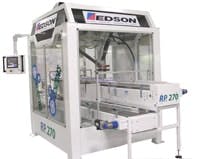Get a Grip on Machine Performance
Many games require players to accomplish twin goals. All racers—from marathoners to hot air balloonists—must travel faster and farther than their rivals. Manufacturers must make better quality products and do it with less cost. Machine builders must balance the functional and creative goals of their end users, while still keeping them focused and realistic enough to achieve useful, efficient solutions that operate as promised and as needed.
This journey from idea to reality is always rough for pretty much everybody—genius being 99% perspiration, you know. However, the added challenge for today’s machine builder is that end-user demands are multiplying and becoming increasingly varied, which makes it harder for many builders to keep some overly inflated expectations from flying away. Besides the usual economic pressures that push manufacturers to seek ever-better performance, this environment is driven by the continued evolution of programmable controllers and software, growth of Internet and Ethernet, emergence of wireless or combinations of all these fast-changing technologies. However, these accelerating demands force some builders to rein in sometimes overzealous users.
Tame the Wild Idea
“We get our share of unusual ideas from end users, and we try to strike a balance between what they want and what’s in our skill set and be as flexible as possible when we the attack the problem,” says Shaun Keperling, senior electrical engineer at Omega Design in Exton, Pa., which makes bottle unscramblers and other packaging equipment.
“Customers make special requests all the time because their applications have unique needs or are in unique situations, and so we examine each request individually. If we can do it without too much difficulty, then we’ll do it, though we still prefer to do what we’ve done before,” says Keperling.
To properly evaluate a special machine request, several factors must be weighed, explains Keperling. These include the time a custom alteration will take compared to the other jobs in Omega’s backlog, whether making the change will be financially worthwhile for user and builder, if there will be longer-term benefits and whether the innovation will be a one-off event or something that other users might want as well.
Omega Design just developed and launched a Schneider Electric/Elau Packaging Systems-based servo version of its bottle unscrambler, replacing the machine’s DC motor and gear train. The new machine also uses Cognex’s vision system in its printing and overall inspection stages.
“The new servo-driven version of our unscrambler cuts our assembly time for the main drive in half, which means much less maintenance time later,” explains Keperling. “Servo positioning gives us better positioning and inspection. We’re also using CANopen for more speed on our I/O sensors and valve manifold. This all means less cost for our users, whether it’s due to better performance or because of more timely delivery from us.”
Keperling adds, “Because we’re engineers, too, we machine builders like bells and whistles as much as our users. However, we also have to stay true to what we know best. And we have to recognize the efficiencies in what we know best. Our advice to users and machine builders is to identify their core focus, learn it well and be an expert in it. Also, be flexible in response to special requests, but don’t spread yourself over too many different areas.”
The Big Bosses
“Wal-Mart and the big club stores drive the types of machines that we have to build,” says Bruce Larson, sales and marketing vice president for Goodman Packaging Equipment in Waukegan, Ill. “End users don’t just want equipment flexibility. They want entire platform flexibility for quicker changeovers, modular systems with one control network and faster delivery. Our customers want one-stop shopping for an end-of-the-line solution.”
In addition, while machine builders try to guide users away from wild guesses about capabilities and toward realistic solutions, many of these same builders also want to deploy off-the-shelf hardware and software, so they too can save by not having to customize, as was the case in the past.
Elie Belbel, senior vice president for OEM solutions at Schneider Electric, says the recent international credit and financial crisis also inspires users to seek out improvement in their existing and new machines. “The finance crunch is really getting many manufacturers, including many that hadn’t done it before, to review their existing machines and seek efficiencies,” says Belbel.
Darren Elliot, global technical resource manager for Rockwell Automation’s OEM Business Solutions, adds that some of the largest retailers are pushing sustainability and other green initiatives, and this is affecting how machine builders construct their equipment. “For example, Wal-Mart is putting LEDs in its refrigerators and freezers and requiring sustainability scorecards for its suppliers, and so related manufacturers and machine builders have to address sustainability as well.”
Some builders say responding to and coping with all these challenges is like riding a unicycle on a tightrope, juggling and holding a tiger by the tail at the same time. No sweat—but only if you’re very organized and very careful.
Joint Efforts
To accomplish this goal, some builders think it’s useful to have a user’s engineering department meet with its maintenance department, so they can jointly agree on what level of customization they’re prepared to support.
While some builders evaluate ideas from their customers, others actively pick their users’ brains for possible seeds of future innovations, and some talk to their competitors’ users. For example, Jerry Henson, flexible packaging sales manager at high-resolution printing press builder Mark Andy’s Comco division in Milford, Ohio, reports that the company has a formal Voice of the Customer program to seek out and document potentially useful suggestions. “We target our end users, but we also interview users of presses from other manufacturers,” says Henson. “All of this helps our design process.”
Rebuild the Builder
Sometimes a machine builder will decide that radical change is necessary. This can mean establishing a whole new company to provide new services, and once in a while this new firm might reinvent itself, too. Whatever the organization or its roles, all come under the heading of delivering the capabilities and services its users need.
For example, three of Goodrich’s aerospace landing gear plants recently needed a new CNC grinding machine and several rebuilt Bryant grinding machines. The tire maker’s three facilities—in Cleveland; Oakville, Ontario; and Tullahoma, Tenn.—sought help from system integrator and machine builder CNC North of Springfield, Vt., because the company previously added new controls to Goodrich’s existing Bryant machines.
Grind It Out
Figure1: CNC North can build its 14-48-I-C two-axis internal grinder more quickly for end users because its hydrostatic slides are predesigned and its granite base can be rapidly cut and customized.
Source: CNC NORTH
CNC North was started in 2005 by CNC Engineering, a system integrator in Enfield, Conn., to exclusively support and retrofit all the Bryant equipment that users needed to have updated. However, CNC North decided in 2008 to move from supporting and rebuilding CNC grinders to making its own and just launched its 14-48-I-C two-axis internal grinder (Figure 1) to replace Goodrich’s completely worn out internal grinder. The new grinder name comes from its 14-in. X-slide and its 48-in. Z-slide.
“Goodrich needed a new machine to fit in the same space as its old one, but it seemed like the possible new machines were all much bigger,” says Patrick Harrington, CNC North’s president. “We were able to competitively quote and meet the same schedule as the other machine builders, even though we were building from scratch to fit the available space. Harrington reports that CNC North’s new grinder costs about $620,000 and has a lead time of 30 weeks, while traditional machines cost about $1 million and take about a year to deliver.
“We were able to move faster because our grinder’s hydrostatic slides were already designed and just needed to be sized and because we were able to quickly get a custom-made piece of African black granite for our grinder’s base that fit Goodrich’s floor space requirements,” says Harrington. “These types of machines typically have cast metal bases, but they take a long time to forge and usually are only available in standard patterns. We use some standard pieces, too, but we’re able to combine them to meet the user’s needs.”
Simplify With Software
Harrington says CNC North’s new grinder incorporates CNC Engineering’s existing Open Vision Grind software that interfaces through a PC-based front end with GE Fanuc’s hardware via GE’s high-speed serial bus (HSSB) and has been installed in about 150 CNC grinders that they’ve retrofitted over the past seven or eight years.
“We designed this software to be backward-compatible,” says Harrington. “A database allows us to develop user-specific functions, update them immediately by email and troubleshoot remotely, if the local firewalls allow it,” says Harrington. “This is a lot faster than sending out a CNC field-service guy and writing code by hand. “The software also helps when we find a customer with seven or eight different machines and operator interfaces because we can put our solution on all the machines and the user can have a common interface.”
In the past, Harrington adds, these CNC controls were on a single-board Intel computer programmed with PLM language, but this old hardware was very difficult to support. Now, CNC North uses PCs and HMIs running and communicating via GE Fanuc’s standard hardware platform, which has optional CNC screens and software macros for grinding applications such as CNC North’s Open Vision Grind. “This gives users the look and feel of the old software they’re used to, but access to much more information.”
Build With Blocks
Kevin Zeinemann, P.E., engineering manager at Curt G. Joa in Sheboygan Falls, Wis., reports his company recently revised how it builds machines that make disposable paper products such as diapers and sanitary napkins. “We saw a need to invest in standardized, but flexible, design approaches, and so we predesigned some standard widgets that can be put together to make a machine,” says Zeinemann. “What we learned was that these building blocks really spurred our own creativity to combine and recombine components and develop new capabilities for our users.”
Similarly, Harrington says CNC North’s users also are demanding custom-built machines at competitive prices and no longer are willing to settle for whatever a builder is trying to sell. Fortunately, he says, builders can provide this customization by assembling standardized components in different ways. “On our new grinder, the base and guard are custom, but the wheel-head, work-head and hydrostatic slide are all standard, so they can be used on multiple different machines,” explains Harrington. “We’re also planning to build a large bearing grinder soon, but it will have the same standard hydrostatic system that we’re using now.”
To make this accelerated machine building process work, however, Harrington adds that CNC North and its clients must work closely before and during the build process, agree specifically on what capabilities the user truly requires and go through all the specifications before doing a retrofit. “We have a machine setup page in our Open Vision Grind software that lets us display the number of axes that users say they’ll need, whether their grinder is internal diameter (ID) or outside diameter (OD) and other relevant programming questions,” he says. “The software also addresses different grind types, dressing applications, chucking types, axis configurations, parts handling and pre-, in- and post-process gauging.”
In fact, to make its users’ grinding processes even easier, CNC North also plans to mount a 48-in. Z-slide on the bottom of one of its CNC grinders. Harrington says this will give the machine’s cross slide more room, require 30% less space overall and most importantly enable users to perform internal and external grinding with the same chucking components.
Go Modular to Go Abroad
The average small machine builder relies on only five or six primary users, according to Robert Hattin, president of Edson Packaging Machinery in Hamilton, Ontario. And because only half are active at any one time, it’s crucial for many builders to continually seek out new customers and markets. “However, there’s not much we can teach the German, Italian and French machine builders, so we have to go to more emerging markets with a modular machine that lets users add automation in little chunks,” says Hattin. “Because of the ongoing financial crisis, it’s even more important for us to go global now.”
Take It From the Top
Figure 2: Edson Packaging Machinery developed its RPd 270 top-loading case packer to help users implement pillow packs and other types of sustainable packaging.
Source: EDSON PACKAGING MACHINERY
Consequently, between this past July and September, Hattin and his colleagues at Edson designed and built their RPd 270 top-loading case packer and global packaging platform with some assistance from Schneider Electric and Elau (Figure 2). The 2x2 m packer has an Alpha gearbox, employs Koval pneumatics and uses servos on its conveyor and robot. It can continuously load one to three cases with one packer, or load four to six cases by bolting on a second packer module.
“Users really appreciate this level of modularity and flexibility because they can scale up their applications as needed,” says Hattin. “Likewise, we also built RPd 270 as a top-loading design to complement our existing side-loading packers because several users wanted it. More end users and the retailers they supply are moving to sustainable packaging, and this means pillow packs and flexible stand-up packaging that needs a top-loading machine.”
Besides implementing technical improvements, Hattin believes the key is for the builder to work together with users to clearly evaluate what the user wants to do and then analyze exactly what he needs to build to do it. “Besides that, you just need to secure reliable technology partners, give free rein to the few people who really want to get the job done and then just get off your butt and do it,” says Hattin. “Passion plus dedication is the only magic formula.”
Builder Cooperation
One of the best ways machine builders say they can work more realistically and effectively with their end users is to pool their efforts and form collaborative efforts, partnerships and joint ventures as needed. For example, about two years ago, packaging equipment builder Z Automation in Arlington Heights, Ill., joined with fellow builders Goodman Packaging Equipment and Packaging Machines International (PMI) , which recently was acquired by Arpac Group in Schiller Park, Ill., to establish a system integration alliance, packaging end-of-line solutions (PELS), to jointly serve their collective users.
“Users want total system solutions from their machine builders, including design, build and install, and that’s what PELS does,” says Zoran Momich, president of Z Automation. “Previously, builders just made their own machine and tried to integrate once they got to the user’s floor. Now, we build and do all the integrating, including factory acceptance testing (FAT), in our shop before we ship to the user. This is possible because we set all the specifications ahead of time, decide on standard hardware and pick one software and one HMI, instead of different ones for each machine. As a result, we’ve cut our former spare part costs by 300% and we also save on training.”
Momich adds that another benefit of PELS is there’s no finger pointing by the various builders, suppliers and users associated with a particular project. “There’s a lot less confusion now, and that helps us and our users be more realistic and flexible,” says Momich.
In addition, to help users and builders streamline their needs assessments and equipment development, Belbel reports that Schneider Electric recently developed a roadmap program that includes its new So Machine software, which can be integrated with four different hardware platforms, including PLC controls, motion, drives and HMIs. So far, this program has been tested for use in 65 different types of machines in 22 architectures or industrial settings, including packaging, material handling, HVAC, hoist applications and others.
Much like predesigned components, Schneider Electric’s software and hardware devices have been pre-tested to ensure they work together to run particular machine applications. “Because it’s all managed by a single software, this program can be downloaded through one PLC or HMI,” adds Belbel. “This also means users don’t have to rewrite software when they switch, for example, from an HMI for motion or a drive to a PLC control platform. We’re transferring this knowledge to help make our users more autonomous.”
How well are you herding your customers’ expectations?
Mark your territory at www.ControlDesign.com/expectations.
Reach for RealismRobert Hattin, president of Edson Packaging Machinery in Hamilton, Ontario, explains there are several ways that machine builders and end users can be more realistic in their development discussions and in the process of designing and building a new machine.
|






